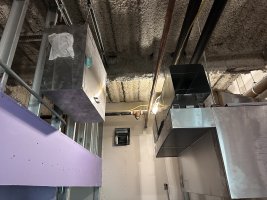110.26 Spaces About Electrical Equipment. Access and working space shall be provided and maintained about all electrical equipment to permit ready and safe operation and maintenance of such equipment.
(A) WorkingSpace. Working space for equipment operating at 1000 volts, nominal, or less to ground and likely to require examination, adjustment, servicing, or maintenance while energized shall comply with the dimensions of 110.26(A)(1), (A) (2), (A)(3), and (A)(4) or as required or permitted elsewhere in this Code.
Informational Note: NFPA 70E-2018, Standard for Electrical Safely in the Workplace, provides guidance, such as determining severity of potential exposure, planning safe work practices including establishing an electrically safe work condition, arc flash labeling, and selecting personal protective equipment.
It is disingenuous to deny a judgement component of 110.26. Likely is a word akin to the word very and should be banned from use in any code. However the inclusion of the word likely opens the door for a judgement to be made. A decision is required to identify that equipment which falls in the category of requiring the application of working space. Now clarify further and decide if the equipment needs to be energized while being examined, adjusted, serviced or maintained.
The informational note suggests that there is a severity of a potential exposure. Obviously there is a chance of an exposure that might be so mild as to not warrant intervention. Determining is making a judgement.
There’s judgement aplenty with 110.26
What I have said so far is one side of the issue. Now the other side.
Name any equipment and wait for a decision. There isn’t a list so it has to be adjudicated one at a time. Look at the NEC definition of equipment:
Equipment. A general term, including fittings, devices, appliances, luminaires, apparatus, machinery, and the like used as a part of, or in connection with, an electrical installation.
That leaves the door open wide And if your only tool is a hammer, everything looks like a nail. It is less work to use the hammer.


